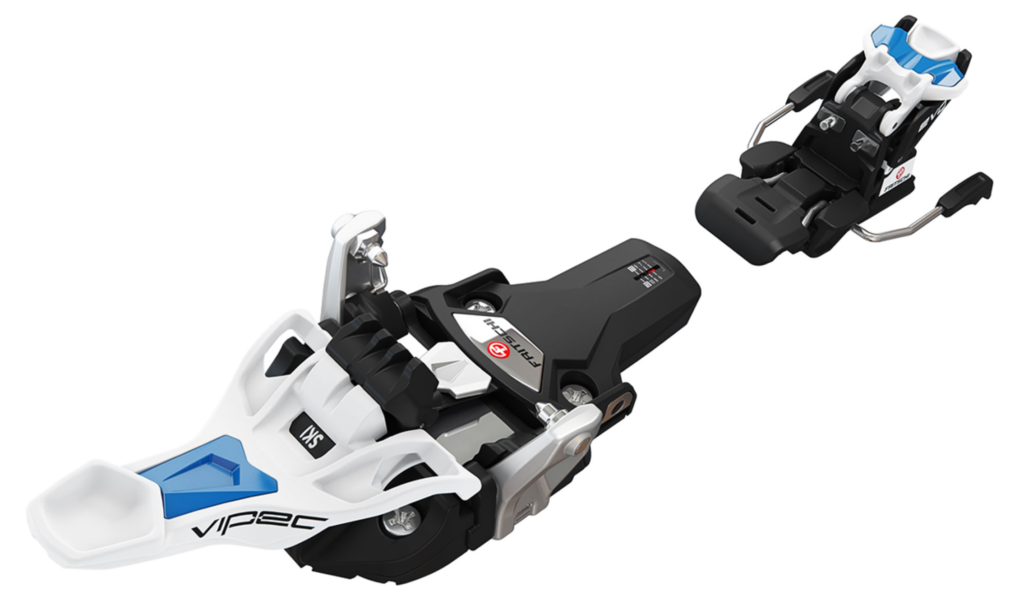Powder Cloud Likes: Fritschi Vipec EVO 12
It’s taken Fritschi a few years, but the latest version of the Vipec has produced a binding that I hope will be an industry trend: a tech binding that’s lightweight enough for long tours with the safety features and downhill performance similar to those of alpine bindings.
I suffered through the first edition’s mystical front entry and almost punted on the Vipec. But the safety features and skiability brought me back, and now my patience has been rewarded. Fritschi’s latest version of the Vipec (EVO 12) has an improved front entry and reduced weight (1,090 grams per pair).

Here are the primary reasons why the new Vipec earned our Powder Cloud Likes distinction:
Weight: It’s lighter than other bindings in its class, such as the Dynafit Radical ST 2.0 and the G3 ION 12. While not as light as race bindings, it’s light enough for most backcountry skiers who enjoy long, strenuous tours. I believe the Vipec is the lightest tech binding to offer a lateral front release with a DIN setting, which is a segue to our next point.
Safety: Two of my friends, who are certified guides, benefited from the Vipec’s advanced safety features last season. If not for the lateral front release, both stated they would have suffered season-ending lower leg fractures. There are other tech bindings offering a DIN front release, but they add a pound or two. Another significant safety feature is the binding’s ability to release in uphill mode. When you move the lever to uphill mode, you lock out the lateral elasticity, but maintain the release mechanism. Translation: Your foot won’t slide around while skinning, but it will release if caught in an avalanche.
Skiing: It skis similar to an alpine binding (read: far better than other lightweight tech bindings). Somehow, they’ve been able to take the critical performance features of an alpine binding (elasticity, solid heel, low ramp angle) and engineered them into a lightweight tech binding. The elasticity is key and should not be understated. It makes the ski perform better. It enables forward pressure. It also allows the binding to absorb chatter from your skis, reducing pressure on your boots and legs providing a more comfortable descent. When I compared a traditional tech binding to the Vipec on the same model of ski, I found the performance of the Vipec to be substantially better, allowing me to ski more aggressively and handle variable snow conditions with greater confidence.
An added bonus is the binding’s ability to transition from ski mode to walk mode and back without taking your boot out of the binding.
No backcountry binding is perfect. The front entry is still a bit tricky, but not a deal-breaker. I had problems with wet springtime snow building up in the front, restricting the ability to transition. Since I’ve had this problem with other bindings, I’ve learned how to quickly mitigate with my ice scraper. Also, I’ve heard from a few people who’ve broken the heel risers, but I’ve not had any problems with mine.
Here are two other reviews from Blister Gear and Engearment for further research.
Through backcountry skiing, Paul Rogers has found incredible happiness, lasting friendships, and the opportunity to traverse the snowscape across Europe and North America. He founded Powder Cloud to help others safely find the same.


